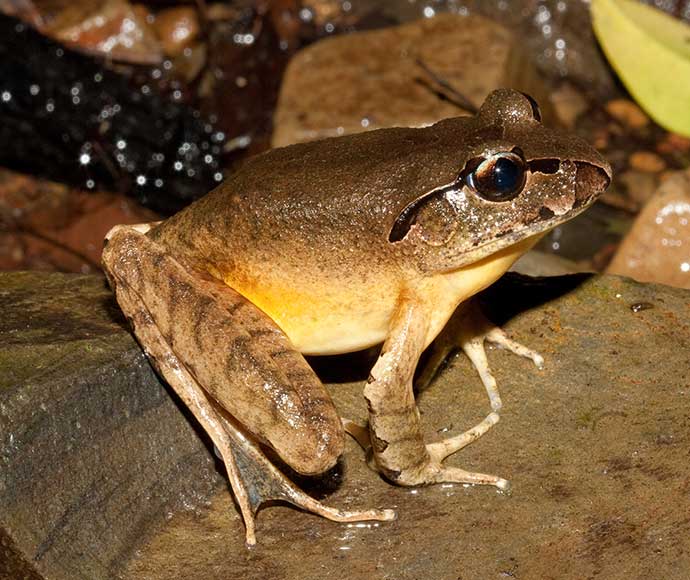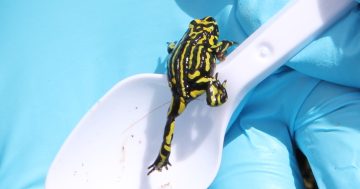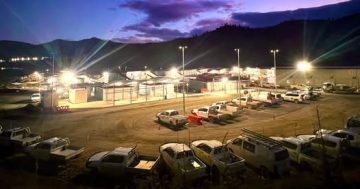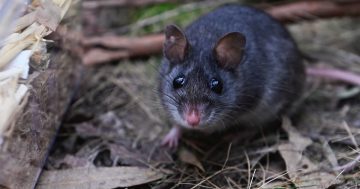
Pockets of stuttering frog colonies on the NSW South Coast have avoided contact with the deadly chytrid fungus, but they have been decimated by drought and the Black Summer bushfires. Photo: NSW Department of Primary Industries.
Residents of the NSW South Coast will soon hear the soft, pulsating trill of the stuttering frog again after the species was almost wiped out due to the combination of a deadly amphibian fungus, ongoing drought and the Black Summer bushfires.
A captive breeding program is set to commence at Symbio Wildlife Park, near Wollongong, with metamorphs to be released into trial areas around Nowra, where they will be monitored, before thousands of froglets are released into pockets of subtropical and wet sclerophyll rainforest along the South Coast as far as the Victorian border.
Stuttering frogs are one of 810 native animals, plants and ecological communities identified as being in need of urgent management intervention by a Wildlife and Threatened Species Bushfire Recovery Expert Panel, which described the bushfires as an “ecological disaster”.
Symbio Wildlife Park conservation program manager Jarrad Prangell said the park has built a specially designed frog house where animals from the north coast and central NSW will be bred before being released into the wild.
While a few pockets of frogs on the South Coast have avoided coming into contact with the deadly chytrid fungus, which causes the disease chytridiomycosis that has wiped out one-third of amphibians worldwide, Mr Prangell said a combination of ongoing drought and bushfire in the region has decimated the population during the past two years.
“They’ve been holding on in certain pockets for some time, but drought has turned their habitats drier, and the fires had a massive impact,” he said.
“All through the South Coast to the Victorian border, the stuttering frog has been in low numbers, but a handful turned up from time to time.
“Since the fires, we’ve haven’t had many sightings of stuttering frogs, and we’ve reached a point where it’s pretty critical to start restoking.”

The frog breeding facility at Symbio Wildlife Park will soon be home to a stuttering frog breeding program. Photo: Symbio Wildlife Park.
Mr Prangell said the entire progeny of frogs from the breeding program would be released on the South Coast.
“Ongoing monitoring will be occurring to make sure the frogs are doing well, and hopefully breeding in their natural habitat,” he said.
“There’s a lot of potential for this program – the future’s looking good for the stuttering frog.”
Minister for the Environment Sussan Ley said captive breeding is helping to establish insurance populations for this precious species, and increase their numbers so they can be rehomed back into the wild.
“This is just one of many initiatives across Australia being funded as part of our investment in wildlife rescue, wildlife care and captive breeding of bushfire affected species,” she said.
“Fire affected species across Australia also continue to be supported by activities including feral animal and weed control, erosion management, Indigenous fire and land management, habitat restoration and protection of refuges.”
The stuttering frog (Mixophyes balbus) is a large amphibian, with adult males growing to 65mm and females 80mm in snout-vent length. Dorsal coloration is yellow-brown to olive-green, which merges laterally into the white ventral coloration.
A dark stripe runs from the snout through the eye to the tympanum, and there are several faint, thin dark bars on the hind limbs.
The male advertisement call is a soft, grating trill of about 10 pulses.











